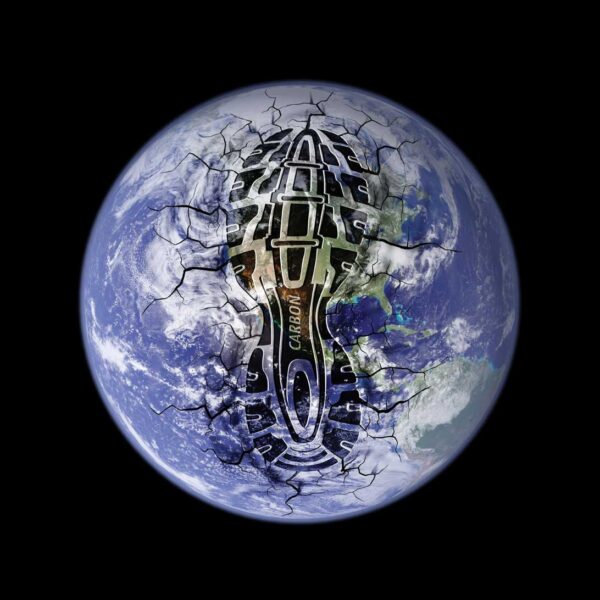For long-term survival, humans will need to be planetary engineers.

Look at our world, a brilliant blue-and-white orb spinning through the star-speckled darkness. As the eons tick by, the brown continents slide around the oceanic globe like pieces in a spherical puzzle. The white polar caps grow and shrink as Earth wobbles in its orbit. The dayside glints in the light of the Sun. For billions of years, the dark of the nightside is broken only by a flash of lightning, or a splash of aurora. And then, after 2 billion years, a wash of green crawls over the dayside continents.
But recently, new lights start dotting the nightside, connecting along tiny threads, and spreading in brightening webs. On the dayside, a loose mesh of dark lines is now visible, each swiftly surrounded by patterns of vegetation. The oceans are now crossed by small, wave-generating objects. And then, little constructions of refined metal start jumping off the planet, sending radio pulses toward home, signaling the arrival of curiosity and technology. This planet is looking for answers.
Comparing Earth to our sister planets gives us new perspective. Venus and Mars once enjoyed environments quite like Earth, but Venus became an oven and Mars a freezer. Comparative planetology teaches us that Earth is balanced between these fates, and global climate systems are frighteningly complex. All our detailed predictions are surely wrong at some level. However, well-known physics allows us to make some secure long-term predictions.
As a star ages, it slowly heats up as hydrogen fuses into helium, increasing overall density, and thus requiring a higher core temperature to balance gravity. All the planets gradually heat up. Earth has been protected from Venus’s runaway greenhouse by a nifty negative feedback that regulates atmospheric carbon dioxide through volcanism and chemical weathering of rocks. If we don’t muck it up, this system will work for another 1 or 2 billion years. But runaway global warming will be inevitable.
Earth has endured radical global change many times before, varying between greenhouse and snowball conditions. As Earth becomes more populated with humans, coastal areas become densely inhabited and food consumption approaches the planetary carrying capacity. Under such circumstances, climate change becomes a more dangerous prospect. Earth’s past pattern of climate oscillations, projected into the future, becomes a recipe for disasters even in the absence of human actions. Eventually, we’ll have to intervene in climate evolution.
Bacteria have altered the atmosphere more than once, in ways that were fatal for many creatures. We proudly call ourselves Homo sapiens, which translates roughly as “wise monkeys.” But in our inadvertent tinkering with our planet, are we really that different from bacteria?
When we contemplate taking collective action to guard against global warming, to deflect dangerous asteroids heading our way, and even when we model the terraforming of Mars, we are imagining ourselves as wise monkeys in the role of planetary engineers.
Active planetary management will be necessary for long-term survival on any planet. In a universe full of evolving worlds, could we be the first to confront these challenges? If we learn to take the long view, with the planetary perspective born of the Space Age, we are much more likely to find out.
This article originally appeared in print in the May 2009 issue of Sky & Telescope. Subscribe to Sky & Telescope.
 0
0
Comments
You must be logged in to post a comment.